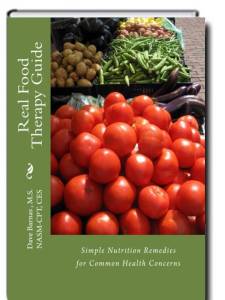Seems like all of us have a habit we’d like to change. Eat better, exercise more, fix more whole food meals or make “me” time a priority. Yet, for some reason, just when we have a healthy habit in our grasp, it gets away. It’s seems so tough to make it stick no matter what we tell ourselves.
Why is it so hard to master healthy habits? How can we do it?
By breaking habit building into 3 easy-to-learn lessons.
In this post, lesson one will be revealed through two simple insights. We’ll cover lessons two and three in the near future.
Insight #1: Learn the Loop
Charles Duhigg, author of Smarter Faster Better: The Secrets of Being Productive in Life and Business, says that habits are born from something called a “habit loop.” The “habit loop” lives in the brain and it’s made of three steps.
Step one is a Cue or trigger such as:
- Visual cues: Post-it note, green light, clock, etc.
- Auditory cues: Text message, alarm, music, etc.
- Emotional cues: Feeling sad, anxious, frustrated, excited, etc.
In response to our cue, we have step two, a Routine. Routines include:
- Vacuum basement (response to post-it-note cue)
- Take shower (response to morning alarm cue)
- Eat potato chips (response to emotional discomfort cue)
In step three, we have a Reward, the pleasure from doing the routine.
- A sense of accomplishment for getting something extra done around the house
- Starting the day feeling refreshed or invigorated after a warm or cold shower
- Enjoy the satisfying comfort of filling up with a bag of tasty chips
The tricky thing about the three step habit loop is our brain doesn’t know the difference between healthy and unhealthy habits! The brain just responds to cues by performing routines in search of rewards. So how can this loop be changed for the better?
Insight #2: Open the Habit Loop, Insert Desired Routine
In the three step habit loop (Cue – Routine – Reward), study after study shows changing step two, Routine, is at the heart of transforming habits.
To make a healthy habit stick, we have to be willing to open the habit loop and insert our desired routine change. Unless we interfere with our brain’s automatic mode, the habit loop will run on autopilot.
Consider the success of folks in AA (Alcoholics Anonymous). To adopt a healthy habit, they open the habit loop and insert the desired routine change (call a sponsor). Note step 1 and 3 are the same below, but step two is different. Step two is where change takes place.
Step 1. Cue: Feeling down, depressed
Step 2. Routine: Old: have a drink New: Call my sponsor (instead of drinking)
Step 3. Reward: Feel relief from the blues, having positive thoughts, feeling good again
For someone in AA to make a healthy habit change, they don’t change their cue of feeling blue or the reward of feeling good. Instead, they try a different routine. They call a sponsor, someone who is prepared to support them to help them feel good about themselves.
In the process of mastering healthy habits, as we see in AA, it’s not about getting rid of a bad habit, it’s about changing it.
Once we know how to break down the habit loop, find our new routine and make a more positive change to the routine, we still get the sense of reward we need to take the first step of habit change.
Why Do We Need a Reward to Change a Habit?
Because research suggests that just changing the Cue (step one of the habit loop) and the Reward (step three of the habit loop) won’t change the habit.
From: The Power of Habit
Countless studies have shown that a cue and a reward, on their own, aren’t enough for a new habit to last.
So What’s the Key to Make a Habit Last?
Cravings! We’ve got to crave it for it to become automatic.
From: The Power of Habit
Only when your brain starts expecting the reward-craving endorphins or sense of accomplishment from a routine, will a habit become automatic.
Cravings drive the habit loop.
What’s Next?
Learn how to create the craving in Part 2: click here!
Let’s wrap-up lesson one on how to master healthy habits.
WRAP-UP
1. Learn the Loop – Habits occur in three steps; cue, routine, reward.
2. Open the Loop – Insert Desired Routine – To master a healthy habit, we must be willing to open our habit loop and insert a new desired routine in step two.
3. Cravings Power the Habit Loop – For a habit to become automatic, we must crave it. We’ll learn how in the upcoming post.






